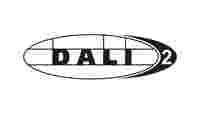Description
WAGO's 753-647 DALI Multi-Master Module complies with the DALI standard according to IEC 62386. This manufacturer-independent protocol ensures the interoperability of DALI devices in lighting applications.
A DALI Multi-Master Module supports 64 addresses for electronic control gears (ECGs) and 64 addresses for DALI sensors. Each DALI ECG can be assigned to 16 groups and 16 scenes. The DALI Multi-Master Module also offers 16 additional virtual groups on the DALI bus. DALI ECGs possess one single address, which is conveniently assigned via the DALI Configurator (free WAGO plug-in). The configurator is available as a stand-alone Windows application or for use with WAGO-I/O-CHECK software.
Using the WAGO I/O System 750, DALI controllers can be seamlessly integrated into other building systems. Several DALI masters can be connected to a single fieldbus node. The maximum number of I/O modules that may be connected to a controller depends on the memory required by the application. Fieldbus nodes are programmed via WAGO-I/O-PRO software. WAGO provides a comprehensive IEC-61131-3 library of function blocks, simplifying the creation of complex lighting applications. Alternatively, an “Easy Mode” allows lighting functions to be readily controlled without any complicated PLC programming. The I/O module is future-ready and can be upgraded to the latest DALI release. A comprehensive and easy-to-use commissioning and maintenance tool is available as a stand-alone application or as an integrated WAGO-I/O-CHECK software component.
Two options are available to supply the DALI Multi-Master Module:
- The DALI Multi-Master DC/DC Converter (753-620) for one individual I/O module.
- The 787-1007 Power Supply to power several DALI Multi-Master I/O modules (753-647).
Wireless switches and sensors based on EnOcean technology harvest available energy to power themselves, e.g., kinetic energy from actuating a switch, or sensors powered by temperature variations or ambient light.
Each transmitter has a unique address and communicates with a receiving unit. Despite the limited energy available, these highly efficient electronics can transmit the signal several times, guaranteeing high transmission reliability.
Product Overview
Your WAGO Contact

International Sales
Mon-Thu 8 am - 5 pm CETFri 8 am - 4 pm CET
Additional service offerings:
Building Automation Protocols
The Standard in Lighting Control
Lighting control with DALI – the “Digital Addressable Lighting Interface” (DALI) is a communication protocol for building lighting applications and is used for communication between lighting control devices, such as electronic control gears, brightness sensors or motion detectors.

EnOcean – Battery-Free Radio Technology for Buildings
EnOcean provides the greatest convenience paired with low energy consumption. Easily control, for example, lights and blinds wirelessly with EnOcean radio modules – for technically and aesthetically innovative concepts in building automation.
